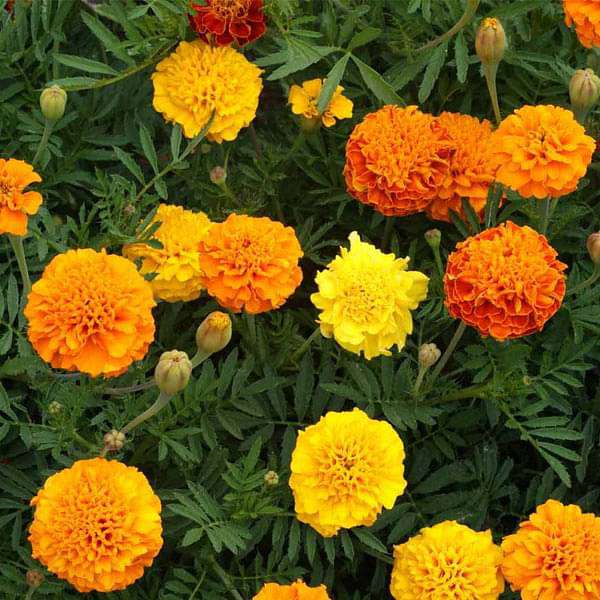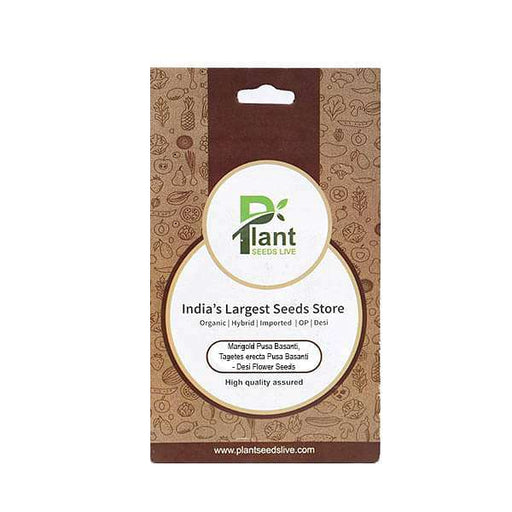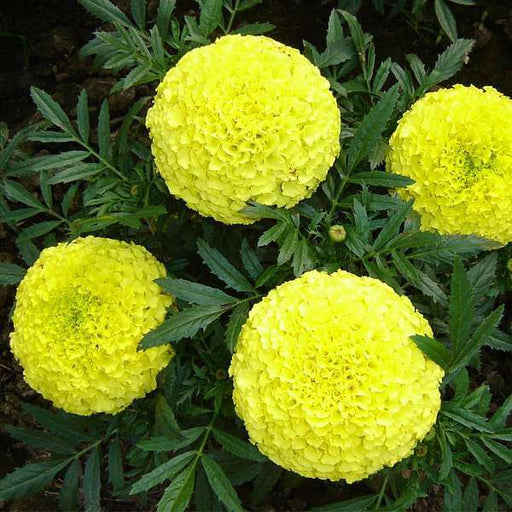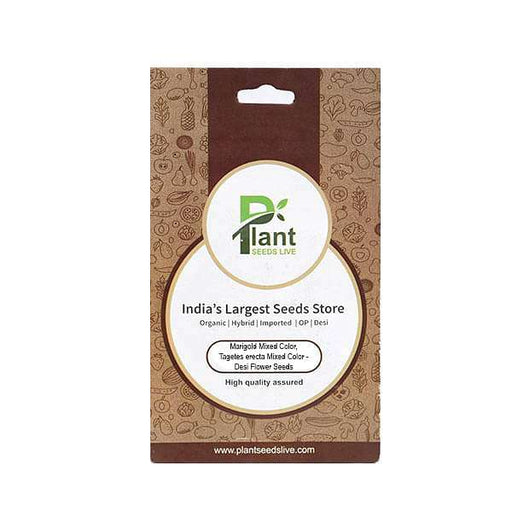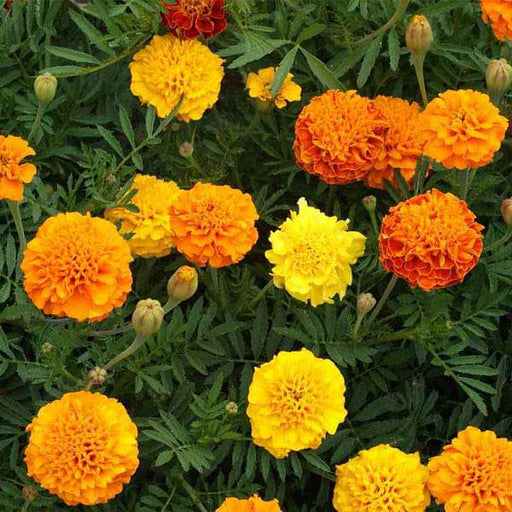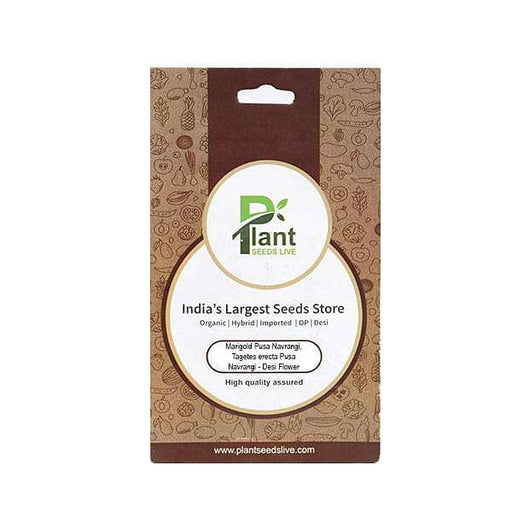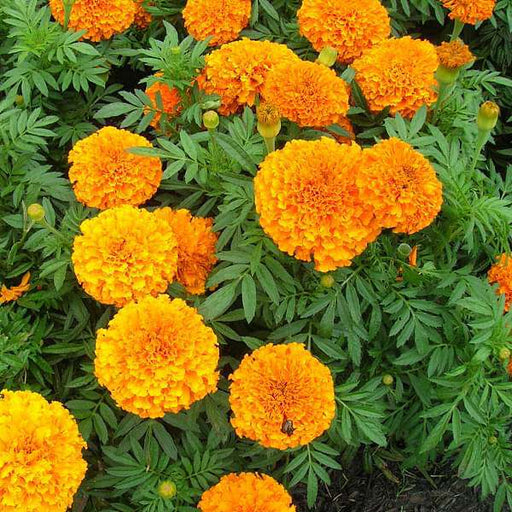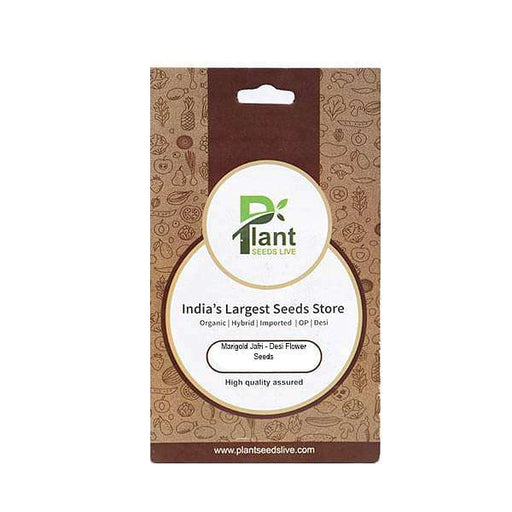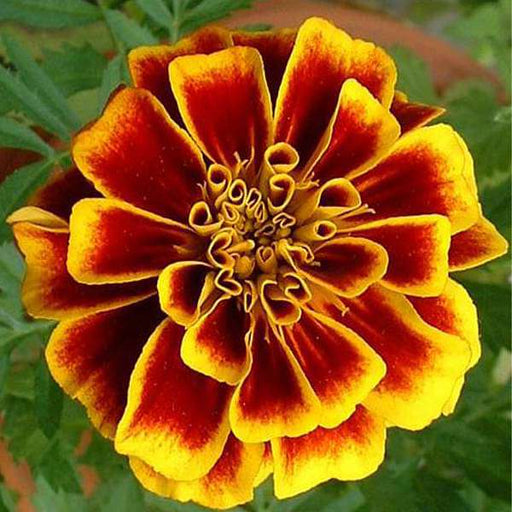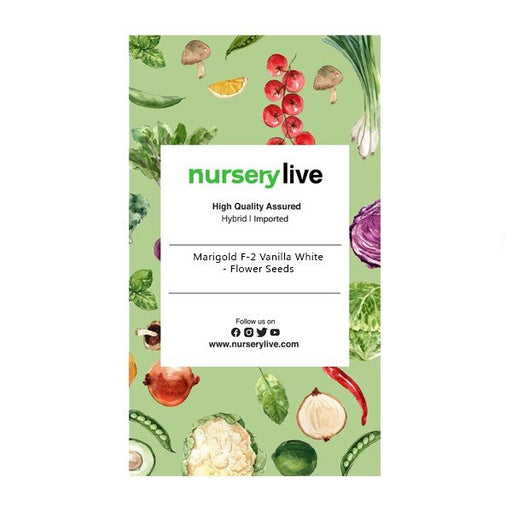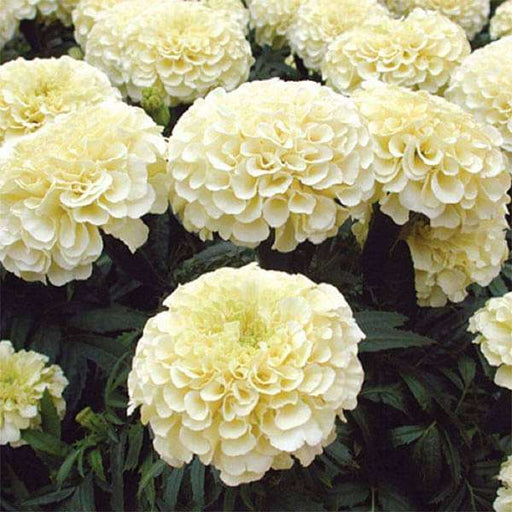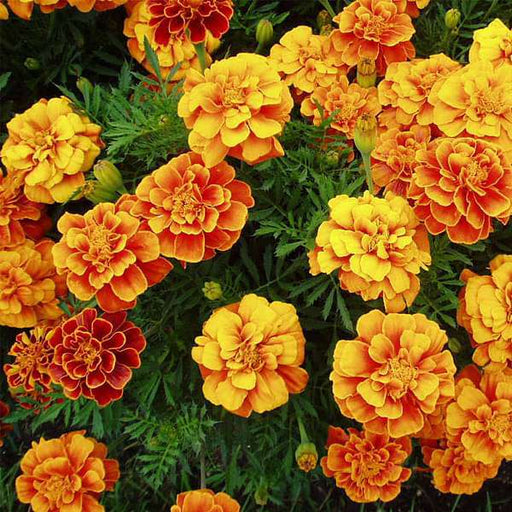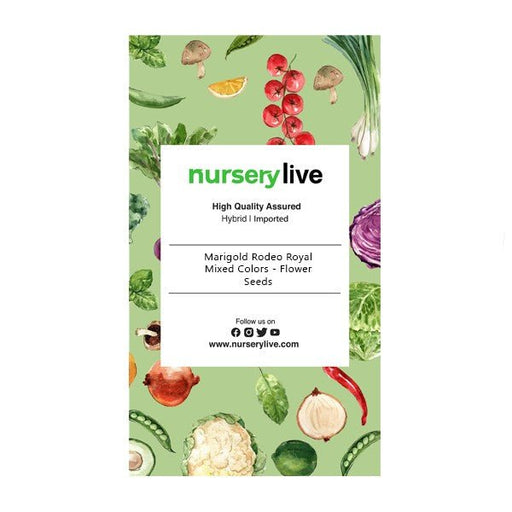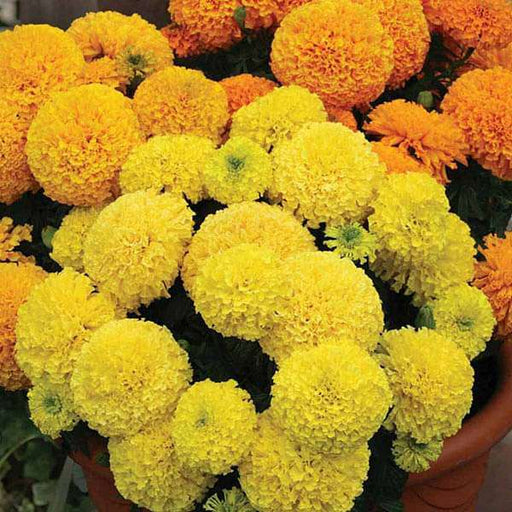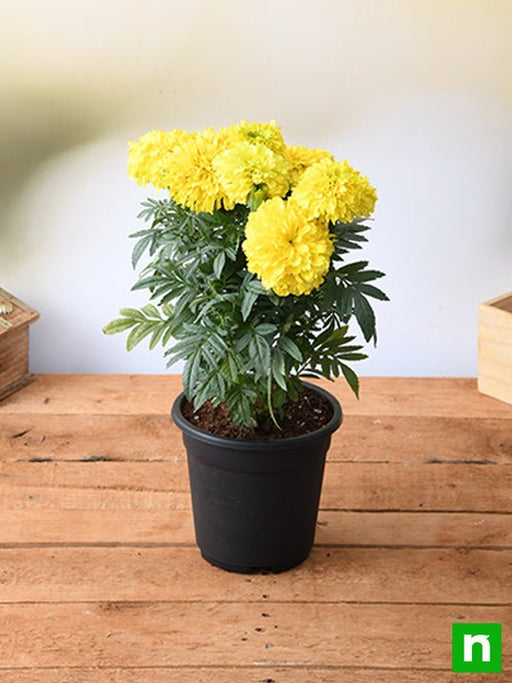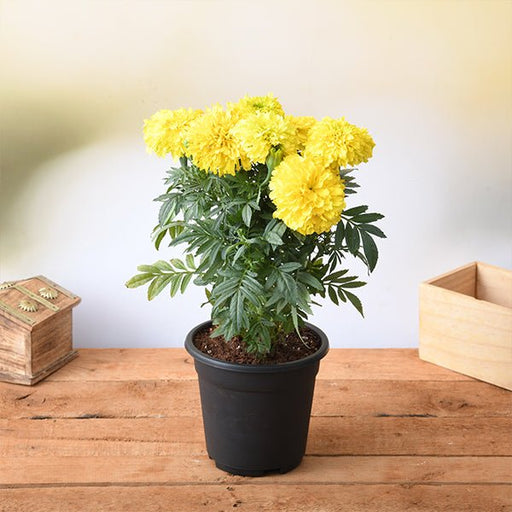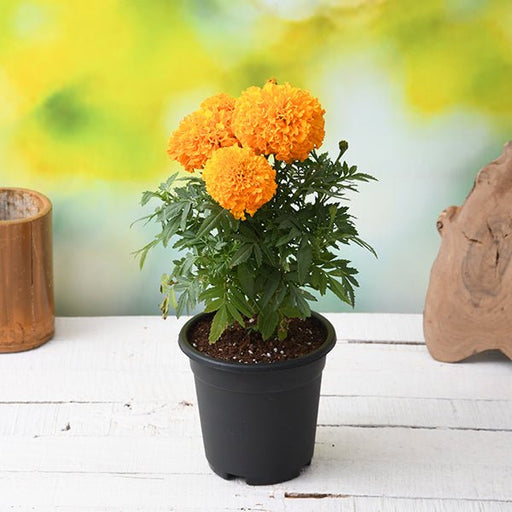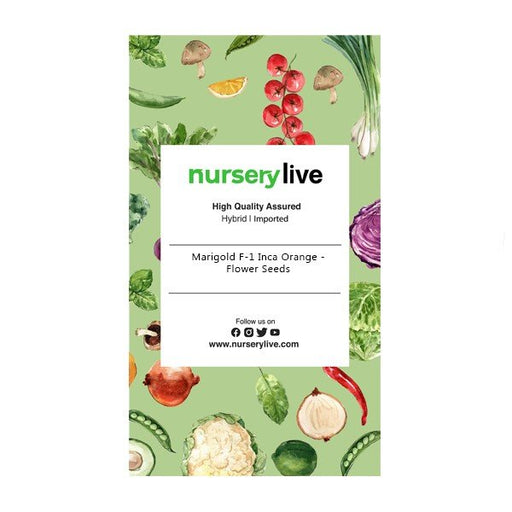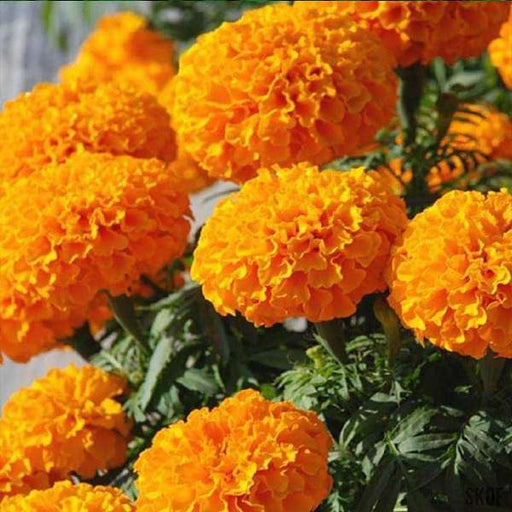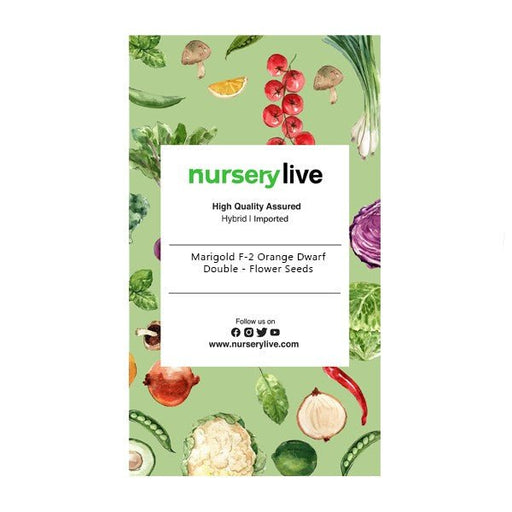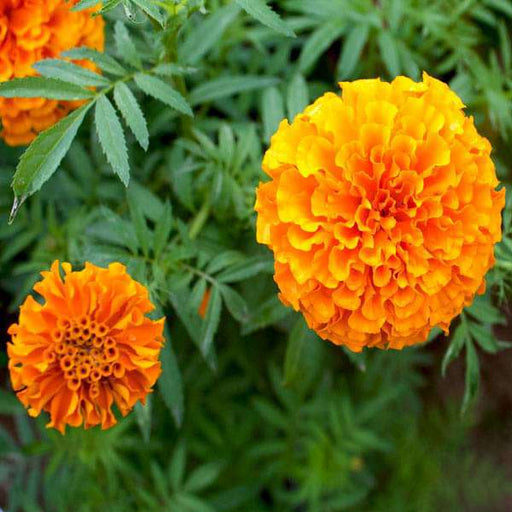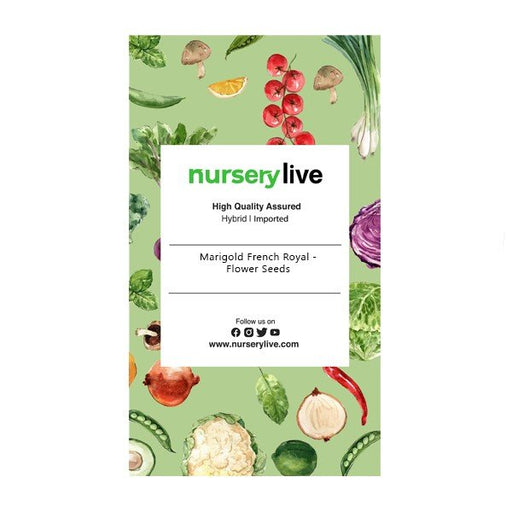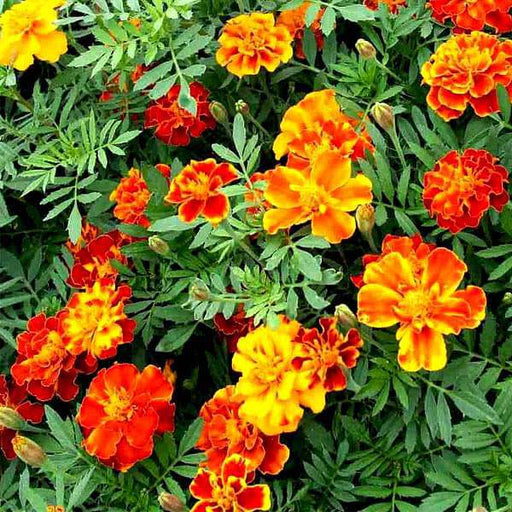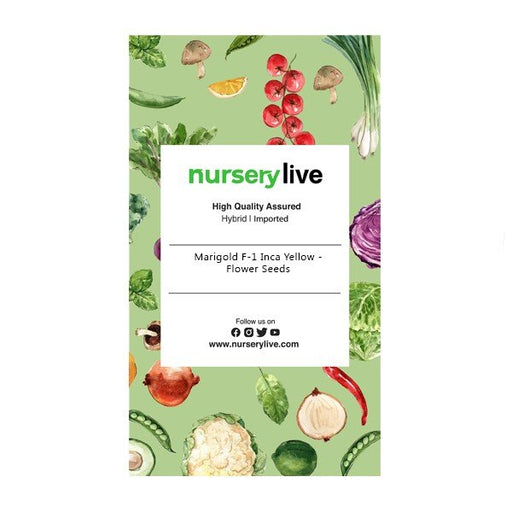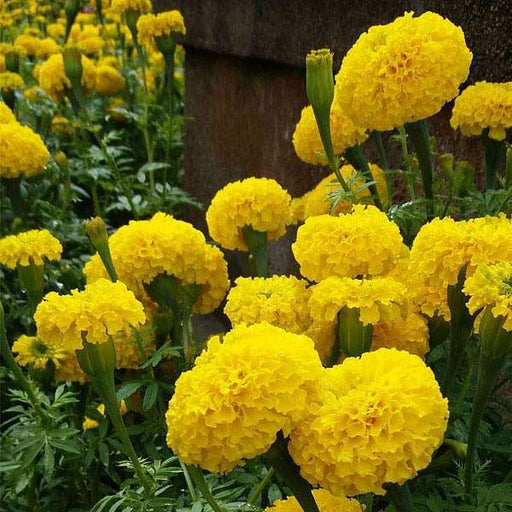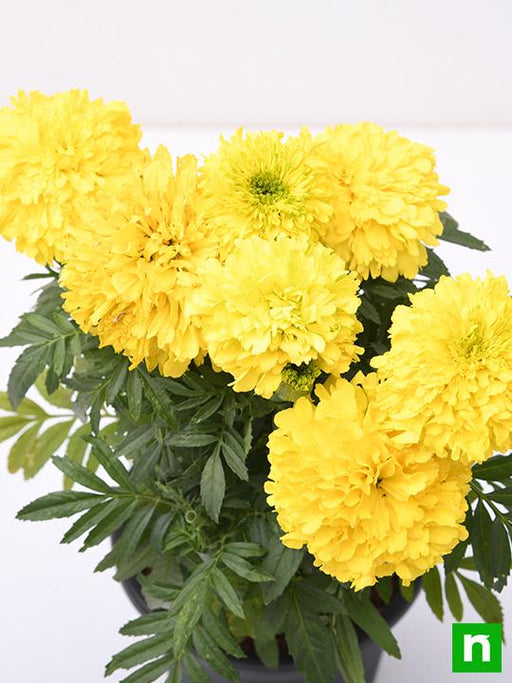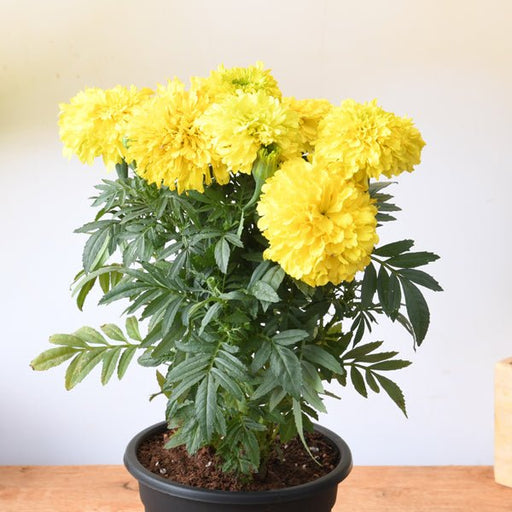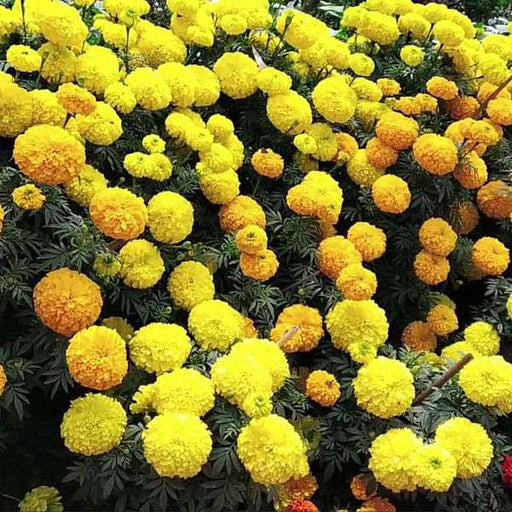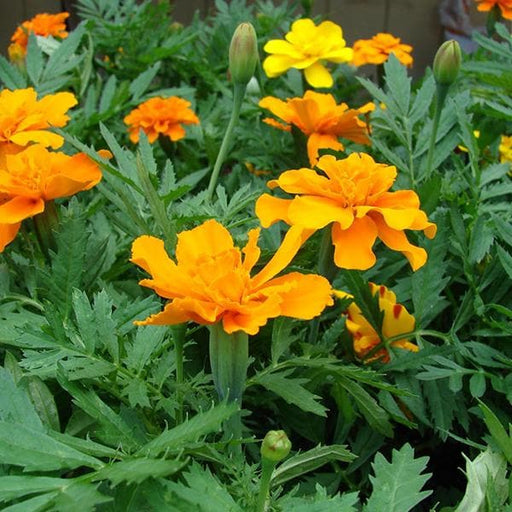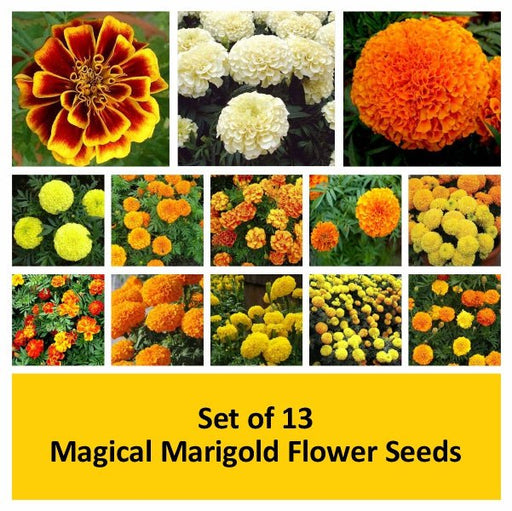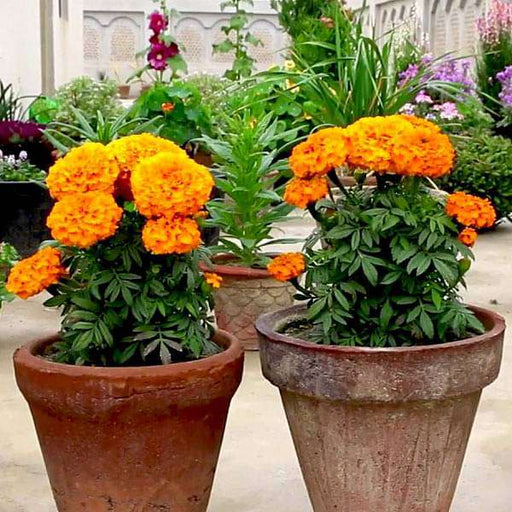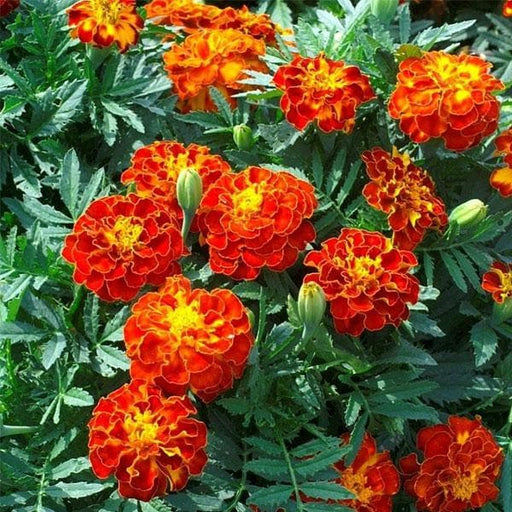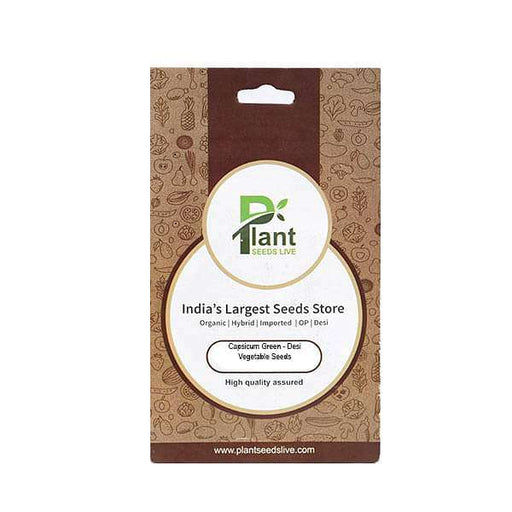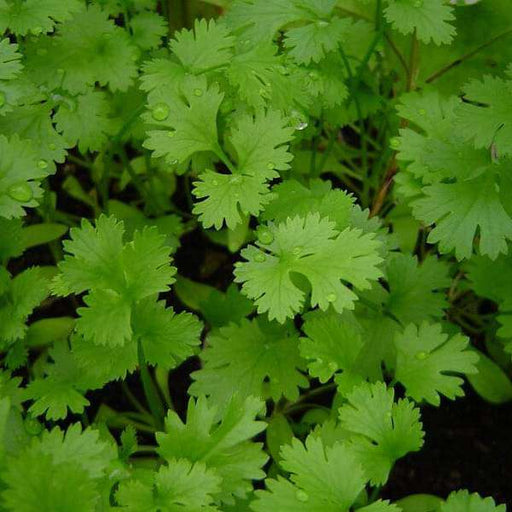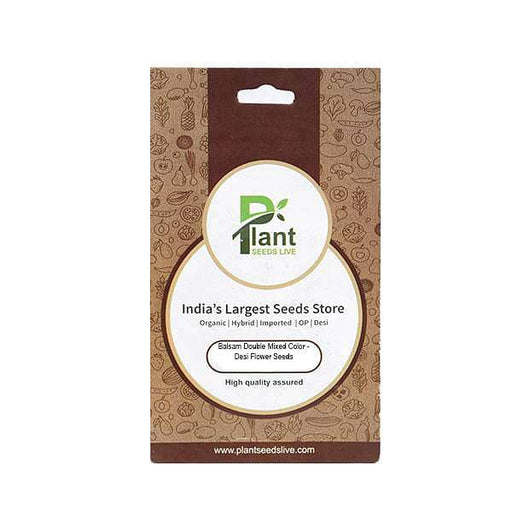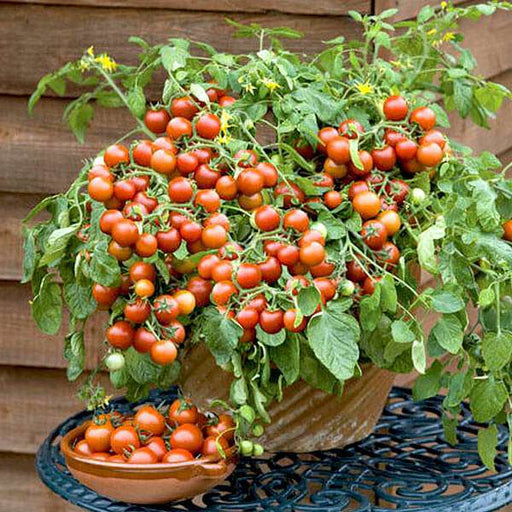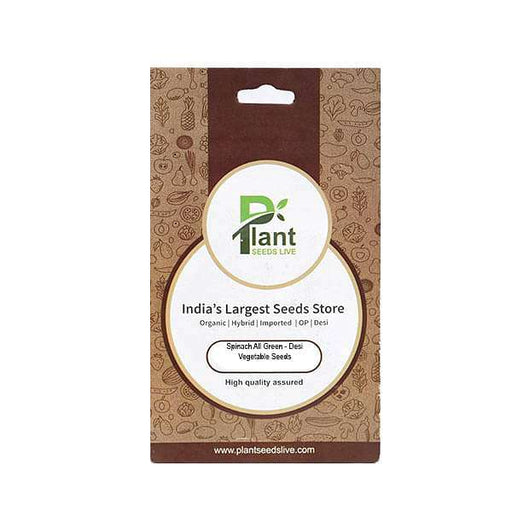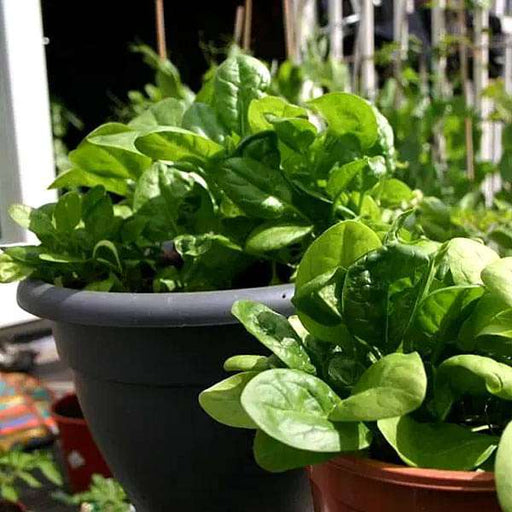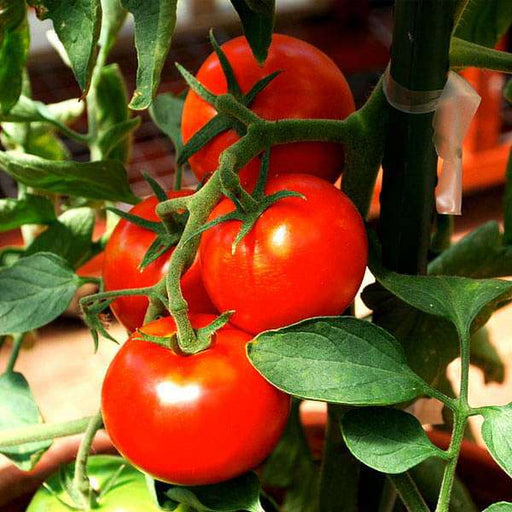French Marigold seeds
French marigolds are a popular type of marigold known for their bright, eye-catching blooms. French marigold seeds come in a variety of colors and can be used to add color and visual interest to any garden or landscape.
African Marigold seeds
African marigolds are another popular type of marigold known for their large, showy blooms. African marigold seeds come in a variety of colors and are perfect for adding a pop of color to any garden or landscape.
Dwarf Marigold seeds
Dwarf marigolds are a smaller variety of marigold that are perfect for container gardening or small garden spaces. Dwarf marigold seeds come in a variety of colors and can be used to create a beautiful and colorful display in any small space.
Giant Marigold seeds
Giant marigolds are a larger variety of marigold known for their impressive size and stunning blooms. Giant marigold seeds come in a variety of colors and can be used to create a bold and impressive statement in any garden or landscape.
Orange Marigold seeds
Orange marigolds are a popular choice for gardeners looking to add a pop of bright color to their landscape. Orange marigold seeds are easy to grow and can be used to create a stunning display of color in any garden or landscape.
Yellow Marigold seeds
Yellow marigolds are a classic choice for gardeners and are known for their bright, cheerful blooms. Yellow marigold seeds are easy to grow and can be used to create a beautiful and vibrant display in any garden or landscape.
Red Marigold seeds
Red marigolds are a bold and eye-catching choice for gardeners looking to add a touch of drama to their landscape. Red marigold seeds are easy to grow and can be used to create a stunning and unforgettable display in any garden or landscape.
Bi-color Marigold seeds
Bi-color marigolds are a unique and visually interesting variety of marigold. Bi-color marigold seeds come in a variety of color combinations and can be used to create a beautiful and unique display in any garden or landscape.
Marigold companion planting
Marigolds are known for their ability to repel pests and attract beneficial insects, making them an excellent companion plant for many other types of plants. Understanding the best companion planting options for marigolds can help you create a healthier and more productive garden.
Marigold medicinal properties
In addition to their aesthetic qualities, marigolds have a variety of medicinal properties, including anti-inflammatory and antibacterial properties. Understanding the medicinal properties of marigolds can help you appreciate the value of these beautiful plants even more.
Marigold symbolism
Marigolds have a variety of symbolic meanings in different cultures, including love, passion, and happiness. Understanding the symbolic meanings of marigolds can help you appreciate the cultural significance of these beautiful flowers.
Marigold care tips
Proper care is essential for ensuring healthy and vibrant marigold blooms. Understanding the best care tips for marigolds, including soil requirements, watering needs, and pest control, can help you keep your marigolds healthy and thriving.
Marigold varieties
There are many different varieties of marigolds to choose from, each with its own unique characteristics and qualities. Understanding the different marigold varieties available can help you choose the perfect type of marigold for your garden or landscape.
Marigold propagation
Propagating marigolds is an easy and cost-effective way to grow more of these beautiful flowers. Understanding the best propagation techniques for marigolds can help you
Marigold seeds for sale
Finding high-quality marigold seeds is essential for growing healthy and vibrant marigolds. Shopping for marigold seeds online can give you access to a wide variety of high-quality seeds that can help you create a stunning and beautiful garden.
Marigold growing season
Understanding the best time to plant marigolds is essential for ensuring healthy and successful growth. Marigolds are typically planted in the spring and can be grown throughout the summer and fall.
Marigold garden design
Marigolds can be used in a variety of garden designs, including container gardens, borders, and mass plantings. Understanding the best ways to incorporate marigolds into your garden design can help you create a beautiful and visually interesting landscape.
Marigold as a natural dye
Marigolds can be used as a natural dye for fabrics, yarns, and other materials. Understanding the best ways to use marigolds as a natural dye can help you create beautiful and unique textiles using these beautiful flowers.
Marigold in traditional medicine
Marigolds have been used in traditional medicine for centuries to treat a variety of ailments, including skin conditions, inflammation, and digestive issues. Understanding the traditional uses of marigolds in medicine can help you appreciate the healing properties of these beautiful flowers.
Marigold in culinary arts
Marigolds can also be used in the culinary arts, including as a natural food coloring and as a garnish for salads and other dishes. Understanding the best ways to use marigolds in cooking can help you create unique and flavorful dishes using these beautiful flowers.

